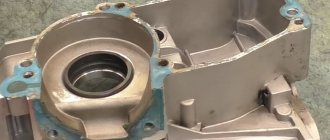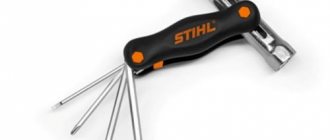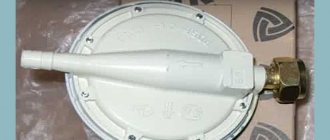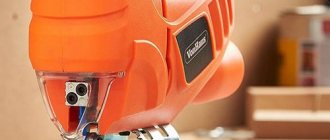What does a pumping station consist of?
What does a pumping station consist of?
A pumping station consists of several functional blocks that are connected to each other. To determine which unit has a breakdown, you need to know the operating principle of the pumping station, as well as its individual parts. The pumping station consists of:
- From a pump that pumps water from a well or well. It provides constant pressure in the water supply system and is connected to the house using pipes.
- From a check valve that prevents water from flowing back into the well or well if the pump does not work for some reason.
- From a hydraulic accumulator or membrane tank, in which a certain amount of water is stored in case of an emergency shutdown. In addition, the hydraulic accumulator allows you to turn the pump on and off for a certain time, which increases its service life.
- From the control and control unit of the pumping station. Using a pressure gauge and a pressure switch, the pressure in the water supply system of the house is monitored. The pressure switch controls the operation of the pump, maintaining the pressure at a certain level.
Each of the parts performs certain functions, but the failure of only one of the parts leads to the interruption of water supply to the household.
Possible reasons
The reasons for an unexpected breakdown of a pumping station may include factors such as:
- lack of electrical energy;
- lack of water in the pumping system;
- damage to the pump, tank, automatic unit, etc.
The design of pumping stations for domestic use is simple, which makes it possible to repair them yourself. It is necessary to disassemble the pump and replace the faulty element, and then put it back together.
Occasionally, a crack in the tank may be the cause, but in other cases, a simple check of the supply of electrical energy is enough.
In each individual circumstance, it is important to find out the reason for the pumping station not pumping water and decide on a way to solve this problem
How does a pumping station work?
Each part does its job.
When the pump is turned on, it begins to pump water into the accumulator until the water pressure reaches the limit set on the pressure switch. The pump turns off, after which water can be collected for household needs. This is possible until the water pressure is equal to the lower water pressure limit set on the pressure switch. The pressure switch is activated and turns on the pump, which raises the pressure level in the accumulator to the upper pressure level. And so every time, cycle after cycle.
In the case of long-term water withdrawal, when the water pressure cannot reach the upper pressure limit, the pump can operate for a long time. After the process of drawing water from the accumulator is completed, the pump can operate for some time until the water pressure rises to the desired level.
What is a relay
Before answering the question why the pumping station does not turn off after drawing water, you need to understand some seemingly insignificant elements of the station. A relay is a small device that allows the circuit to close and open as a result of reaching maximum or minimum pressure in the pipeline.
Don’t forget to set the pressure thresholds in the relay Source img.youtube.com
If water is withdrawn from the pipeline by the owner, the pressure naturally drops, which signals the pump to turn on. After building up the required pressure, the relay opens the circuit and the equipment stops working.
Possible malfunctions and ways to eliminate them
Since pumping stations consist of identical functional units, their malfunctions are typical, regardless of the manufacturer. This means that troubleshooting is identical. The only thing is that, depending on the country of origin, malfunctions can occur either more often or less frequently.
The pumping station works, but does not increase pressure
The pump can operate for a long time, but the pressure in the water supply system cannot increase, as evidenced by the readings of the pressure gauge. In this case, you will have to pay attention to all the components of the pumping station, and the repair may be lengthy. Often, without the involvement of specialists, it will not be possible to cope with this problem on your own. The reasons may be as follows:
- Lack of water in the well or well. Often, such operation of the station leads to failure of the pump, and this is an expensive repair. For such emergency modes, special protection is installed.
- There is a discrepancy between the characteristics of the pump and the characteristics of the main, so the pump simply cannot cope with supplying the volumes of water for which the water main is designed. In addition, a break in the main line is possible and the water goes away for other purposes.
- To check whether the characteristics of the line and the pump match, simply lower the suction pipe into the barrel next to the pump. If the pump raises the pressure to the required level, then the calculations and installation of the route will have to be reconsidered.
- The absence of leaks in the water supply system is checked quite simply: after turning off the pump, you need to monitor the readings of the pressure gauge. If the pressure is stable, then there are no leaks, and if the pressure drops, then the system has lost its tightness.
- The filter malfunction is due to dirt getting into it. The same thing can happen with a check valve. To eliminate the malfunction, it is enough to remove the filter or check valve, cleaning it from dirt.
- The pump can also operate constantly if the pressure switch is faulty or if the response thresholds are incorrectly set.
- If you set the pressure switch response threshold too high, which does not correspond to the characteristics of the pump, then the pump is simply not able to raise the pressure to this level. This means that the upper response threshold is set depending on the pump performance.
- The presence of scale on the contacts of the pressure switch, which can be removed using sandpaper (fine) paper or a needle file.
- Malfunction of the mechanical part of the pressure switch when salts collect on the adjustment springs. The functionality of the pressure switch is restored by regular cleaning.
When the pump runs for a long time, its impeller wears out and it simply does not have enough “strength” to increase the pressure. In this case, repair of the pumping station comes down to replacing the impeller or the entire pump.
Replacing the pump station impeller
The pump may not cope with its work also in the case when the voltage in the electrical network does not correspond to normal - it is greatly underestimated. In this case, the pumping station must operate through a voltage stabilizer. If we take into account all these faults, the repair of the pumping station may drag on indefinitely.
The pumping station turns on more often than designed
The more often the pump is turned on, the faster it will fail as a result of wear of its parts. Having discovered such a symptom, you must immediately pay attention to it and begin repairing the station. The pump may turn on frequently for the following reasons:
- The accumulator volume is too small. Therefore, the water in it is quickly consumed, which leads to frequent switching on/off of the pump. The problem is solved by simply installing an additional hydraulic accumulator next to the installed one. Typically, cost savings may result in additional costs.
- The pressure switch is set incorrectly and the difference between the upper response threshold and the lower response threshold is insignificant. As a result, the pump has to be turned on and off frequently, which leads to rapid wear.
The pressure switch is adjusted by two springs
- For normal operation of the station, it is necessary to check the pressure in the accumulator. Normal pressure is from 1 to 1.5 atm. If it differs from these values, then it is adjusted by bleeding water or pumping air into the accumulator using a conventional or automobile pump.
- Having adjusted the pressure, the pumping station should work correctly. It is not so easy to adjust the upper and lower response levels of the pressure switch, since it is necessary to take into account a number of characteristics of the pumping station, so an error can lead to improper operation of the pumping station.
- The filter and check valve are clogged, which leads to partial depressurization of the system. If the check valve does not hold pressure, then water leaves the system, which leads to frequent switching on/off of the pump. After removing the filter and check valve, they are cleaned and then replaced.
- Damage to the accumulator membrane causes water to be supplied in jerks. If the station is running, the pressure rises, and if the station is turned off, the pressure drops sharply. The solution to the problem is to replace the accumulator membrane.
- There is another reason for the frequent switching on/off of the pumping station - the failure of the spool located in the upper part of the accumulator.
Leakage of the pipeline will also affect the normal operation of the pumping station, since the pressure will drop spontaneously, and the pressure switch will turn on the pump.
DIY water station repair
Presence of air in the system
There is always water in water, but in small volumes, which is practically not felt. When air comes out of the tap along with the water with a characteristic sound, this means that the system is not working correctly. There are some possible reasons:
- The water level in the well or in the well has dropped below the level of the pump nozzle, and the pump pumps air along with water. To get rid of this moment, just lower the pump pipe lower.
- The leakage of some connections allows air to be trapped in the system. Solving the problem involves checking the reliability of the connections and then eliminating the problem.
One of the reasons for the large amount of air in the water is loss of tightness in the suction pipeline
The pumping station does not turn on
First of all, you should pay attention to the quality of the electrical energy supply, which is typical for rural areas. At low voltage, the pumps simply do not work. If the voltage is normal, then you should expect the worst - a pump or motor malfunction.
There are a number of simple reasons that you can check yourself. Not only motors fail, but also plugs, sockets, and connecting wires. In order to check the functionality of a plug, socket or cable, you must have an electrical equipment. If the reason is more serious, then it is better to invite specialists.
The motor hums, but the water does not pump
If the network voltage is below normal, this can lead to similar symptoms. The capacitor located in the terminal box may fail. To determine its performance, you need to use the same electrical equipment, although it is not so easy to check the performance of the capacitor with its help.
Then it is necessary to determine the presence of water in the well or well, determine the cleanliness of the filter and check valve. This is exactly the case when you can disassemble the system by removing the filter and check valve to clean them. After cleaning the system, the elements are installed in place, and the pumping station is turned on.
Next, they move on to checking the impeller, which, especially after a long period of inactivity, can jam due to the presence of salts in the water, which seem to be cemented. To check this point, you need to try to rotate the impeller by hand. If you can’t turn it on, then the fact is clear and the next stage is unlocking the impeller.
We check the impeller - this is already a serious repair of the pumping station
Pump repair
Unfortunately, repairing the pump yourself is not so easy. It's still an electrical device. After long-term operation and if the pumping station did not work for a long time, for example, it was mothballed for the winter, then sometimes when turned on the pump begins to hum, but its rotor does not rotate. The main reason for this malfunction is that the electric motor bearings are jammed because moisture has penetrated into them. During long-term storage, corrosion has formed on the bearing surfaces. It is she who prevents them from spinning.
Pumping station details
The easiest way to start the pump is to move its rotor. What can be done for this.
- It is necessary to remove the back cover of the unit, where the impeller for cooling the device is installed.
- You can try turning the impeller by hand. If it gives in, then you also need to unscrew the electric motor shaft by hand, and then turn on the pump itself by pressing the “Start” button.
- If you can’t turn it by hand, then you’ll have to remove the impeller from the motor shaft and try turning it using an adjustable wrench, but better yet, a gas wrench.
Of course, it would be better to open the pump motor and lubricate the bearings. But if you have never done this yourself, it is better not to open anything or disassemble the design of the device. And even more so to deal with replacing the water pump bearing.
Replacing the impeller
Exactly the same situation, that is, the motor hums and does not rotate, can occur due to jamming of the impeller, which is also called the impeller. It is located inside the working chamber, and there is a very small gap between it and the pump housing. It is after long-term storage of the working unit that rust build-up forms in this gap, which causes the rotor to jam.
The problem can be solved by untwisting the shaft, as is the case with bearings. But if this does not help, it means that the impeller is firmly stuck to the housing. And it is best to replace it with a new one. How to replace the impeller of a pumping station?
- The working chamber of the pump consists of two parts, which are connected to each other by four bolts. Therefore, they need to be unscrewed and one part separated from the other. How to remove the impeller
- The impeller is mounted on the electric motor shaft. To remove it, you need to unscrew the clamping nut that holds it.
- Since the shaft rotates in bearings, the bolt cannot be easily unscrewed. It is necessary to fix the rotor itself.
- Therefore, you need to remove the back cover and the fan impeller.
- Then clamp the rear end of the shaft, for example, with the same gas wrench, and on the other side unscrew the nut with an adjustable wrench.
- After lightly tapping the impeller with a hammer, you need to pry it off with a screwdriver and pull it off the shaft.
- A new impeller is installed in its place, and all operations are performed in the reverse order.
This is how you can answer the question of how to remove the impeller from the pumping station. Let's face it, the difficulty of this operation lies in the fact that during prolonged use the impeller can become stuck to the shaft. Therefore, before dismantling it, it is necessary to lubricate the joint, for example, with technical oil or ordinary water.
Nature of repair work
Some types of repair work are not particularly difficult and are intuitive for humans. There are types of repair work that are quite responsible and without preliminary preparation their implementation is a big question.
Replacing the “pear” of the hydraulic accumulator
When the pumping station is turned on briefly and frequently, when water is supplied in jerks and the pressure in the water supply system is not stable, the membrane should be checked for damage. To check, just remove the plug on the nipple. If it is not air but water that comes out of it, then the membrane is damaged.
The membrane tank device is useful when replacing the pear
Repair of the station should begin with the fact that it is disconnected from electricity and the pressure is relieved. It is necessary to open the taps and wait for the water to drain and only then can you begin repair work. Repairs are carried out in the following order:
- There is a flange at the bottom of the accumulator tank, which must be loosened and the remaining water drained out.
- After this, all fastening bolts are unscrewed and the flange is removed.
- If the tank volume is 100 liters or more, then the membrane is held in place by the presence of an upper bolt (mount), the nut of which must be unscrewed.
- The membrane is then removed through a hole in the bottom of the tank.
- It is advisable to rinse the tank after this, since it may contain quite a lot of sediment in the form of rust, although this is most likely sediment of dirt and salts.
- It is better to install a new membrane the same as it was. A fitting is inserted into it, which serves to secure the membrane.
- The membrane is inserted into the tank through the bottom hole.
- If there is a membrane holder nut, screw it onto the holder. If the tank is large, it is difficult to do this procedure yourself, but there is a way out. The holder is tied to a rope and with the help of a rope it is pulled up, where it is fixed.
- Then the flange is installed in its place, and all the bolts are tightened, and this is done evenly.
- All that remains is to connect the station to the system and put it into operation.
Replacing the membrane is a simple technological process, but you will have to tinker, as there are some subtleties. It is advisable to have an assistant who will help and with whom you can consult.
REPLACING THE PEAR IN THE HYDRAULIC ACCUMULATOR. Correct pressure in the expansion tank, hydraulic tank, hydrophore











